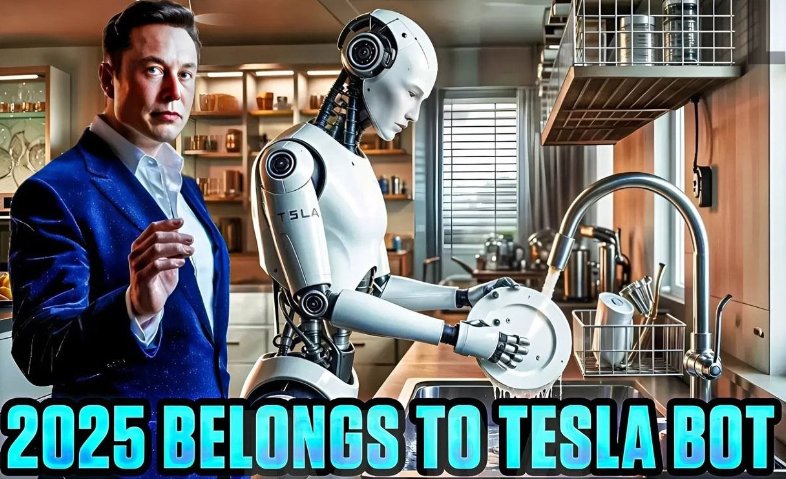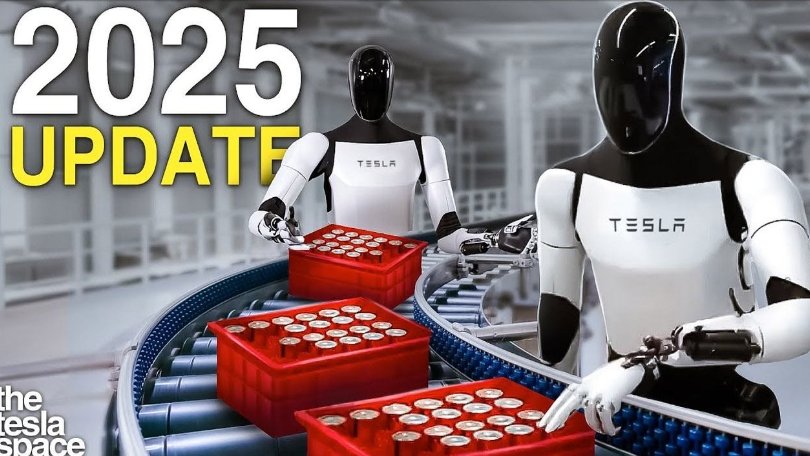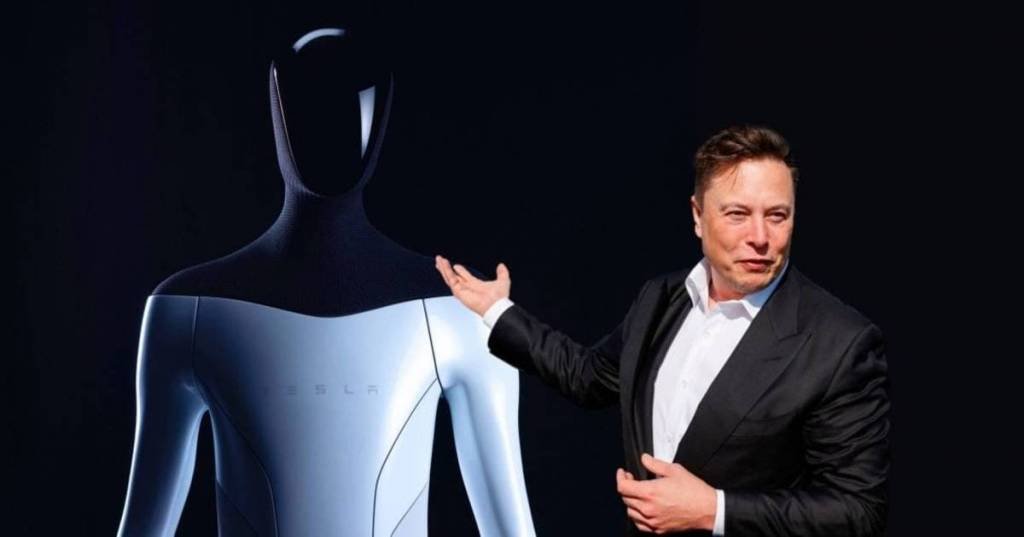Elon Musk, the visionary CEO of Tesla and SpaceX, has always been known for making bold statements that shake up industries and capture the imagination of people worldwide. Recently, he made a stunning prediction that has left the tech and robotics industries buzzing: “Tesla robots will dominate by 2025” With such a bold claim, many are now questioning what this means for the future of robotics, artificial intelligence, and even the global job market. In this article, we explore Musk’s ambitious vision, the technology behind it, and what the future might look like as Tesla robots take center stage.

### **Tesla’s Ambitious Robot Vision**
In a recent statement, Elon Musk outlined his plan for Tesla’s robot division, stating that within just a few years, robots powered by Tesla’s advanced AI and electric technology will not only be commonplace but could even dominate industries worldwide. These robots, designed with the same technology used in Tesla’s self-driving cars, are expected to have the ability to perform a wide range of tasks, from industrial labor to everyday household chores.

Musk has been known to push the boundaries of what’s possible, but this declaration takes his ambitions to an entirely new level. With Tesla’s history of game-changing innovations—such as electric vehicles, solar energy, and AI-driven autonomous systems—the prospect of Tesla robots seems more plausible than ever.
### **What Exactly Are Tesla Robots?**

Tesla’s robots, according to Musk, are designed to be highly capable and versatile. These robots would be powered by Tesla’s Autopilot technology, which uses a combination of cameras, sensors, and AI to understand the environment and make decisions in real-time. The robots are expected to carry out tasks in various industries, including manufacturing, healthcare, retail, and even home assistance.
The robots will likely be human-like in their movements, capable of interacting with their surroundings in ways that current robots cannot. They will be equipped with advanced AI that allows them to learn and adapt, giving them the ability to perform increasingly complex tasks over time. Think of them as the next step in AI-powered automation, far beyond the simple machines we use today.
### **How Will Tesla Robots Impact the Workforce?**
One of the most intriguing aspects of Musk’s prediction is the potential impact on the global workforce. If Tesla robots truly dominate by 2025, it could signify the beginning of a major transformation in the job market. Many manual labor positions, particularly in industries like manufacturing, warehousing, and logistics, could be replaced by robots. While this may lead to more efficient and cost-effective operations, it also raises concerns about job displacement and the need for reskilling workers.
Musk has hinted that Tesla robots could help relieve people of repetitive, mundane tasks, freeing up time for more creative and innovative endeavors. While this might be beneficial for some workers, it also means that the transition to an automation-driven society will require careful planning and adaptation.
### **The Role of AI and Autonomous Systems in Tesla Robots**
Tesla’s success in the electric vehicle and autonomous driving sectors has laid the groundwork for its foray into robotics. At the core of Tesla’s robot technology is the advanced AI that powers its self-driving cars. Tesla’s vehicles have been equipped with sophisticated sensors, cameras, and software that allow them to navigate roads autonomously, making split-second decisions based on real-time data.
By integrating this technology into robots, Tesla aims to create machines that can not only perform repetitive tasks but also respond intelligently to complex and unpredictable environments. The AI used in Tesla’s robots will be capable of learning and improving over time, meaning that the more tasks they perform, the better they will become at doing them.
### **The Benefits of Tesla Robots for Society**
If Musk’s prediction holds true, the widespread use of Tesla robots could bring significant benefits to society. Here are just a few of the potential advantages:
1. **Increased Productivity**: Tesla robots could revolutionize industries by performing tasks faster and more efficiently than humans. In manufacturing and warehousing, robots could work around the clock, significantly increasing output while reducing human error.
2. **Improved Quality of Life**: Household robots could assist with everyday chores, like cleaning, cooking, or even elderly care, making life easier for people who are busy or have mobility challenges.
3. **Enhanced Safety**: In hazardous work environments, such as construction sites or chemical plants, Tesla robots could replace humans, reducing the risk of injury and improving overall safety.
4. **AI Advancements**: As Tesla’s robots become smarter, the advances in artificial intelligence will have far-reaching implications. These robots will serve as testbeds for AI research, pushing the boundaries of what’s possible and opening up new possibilities for innovation.
### **Challenges and Risks to Consider**
While the idea of Tesla robots dominating by 2025 is exciting, there are significant challenges and risks that must be addressed. One major issue is the development of AI that is both advanced and safe for human interaction. As robots become more autonomous, there is a risk that they could malfunction or even be misused. Ensuring that Tesla robots adhere to ethical guidelines and remain safe is a critical challenge.
Moreover, the widespread adoption of robots in the workforce could lead to significant social and economic disruptions. As automation increases, the need for retraining and reskilling workers will be paramount. Policymakers, businesses, and educational institutions will need to work together to ensure that workers are not left behind as robots take over tasks once performed by humans.
### **Elon Musk’s Vision for the Future**
Elon Musk’s statement about Tesla robots dominating by 2025 reflects his larger vision of a future driven by advanced technology and automation. Whether or not this bold prediction comes to pass, one thing is certain: Musk continues to push the boundaries of what’s possible, challenging the world to think differently about technology’s role in shaping our future.
If Tesla robots do indeed dominate industries by 2025, it will mark a monumental shift in how we live and work. It will not only change the way we interact with technology but also challenge us to rethink the very nature of work, productivity, and human potential.
Elon Musk’s prediction that Tesla robots will dominate by 2025 has captured the imagination of people around the world. While the idea of robots transforming industries is nothing new, Tesla’s unique combination of AI, robotics, and automation could make this vision a reality sooner than expected. As we look ahead to this technological revolution, it’s clear that the future of work and society will be forever changed by the rise of Tesla robots. Whether you’re excited or skeptical, one thing is for sure—the world will never be the same once these robots start dominating the landscape.
